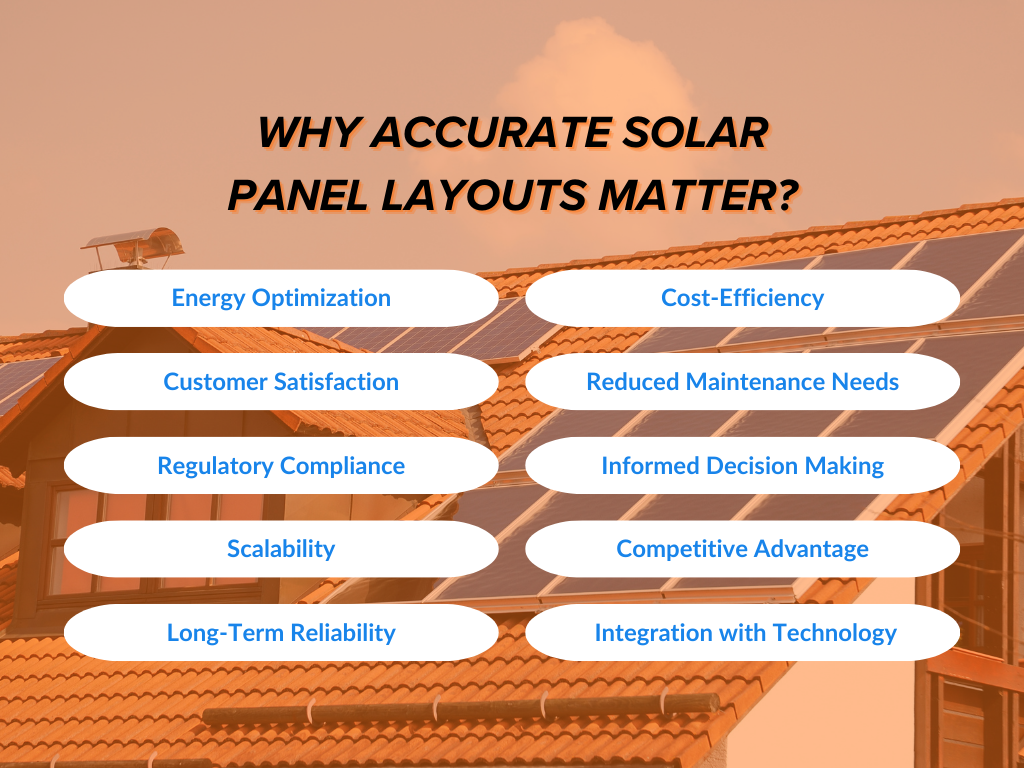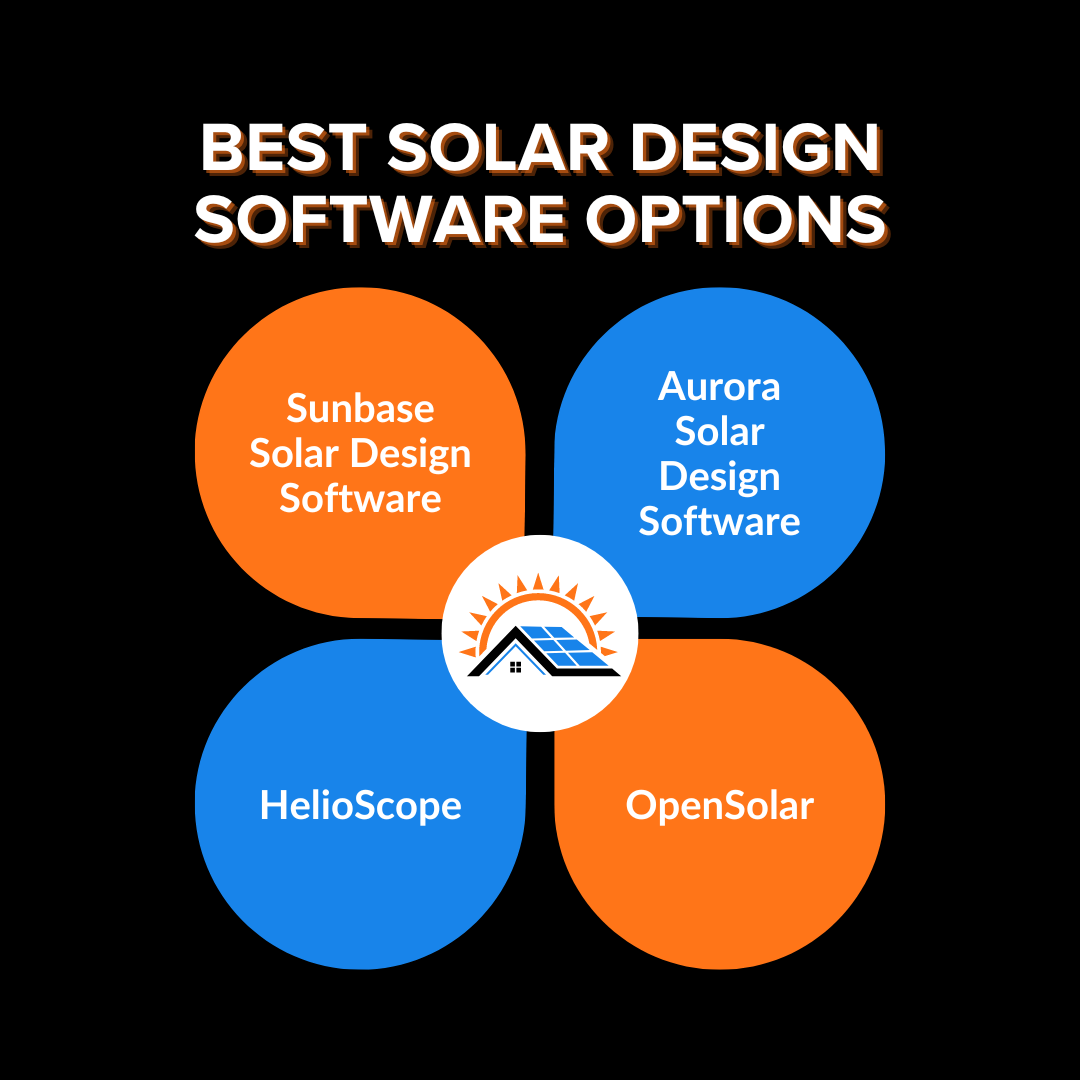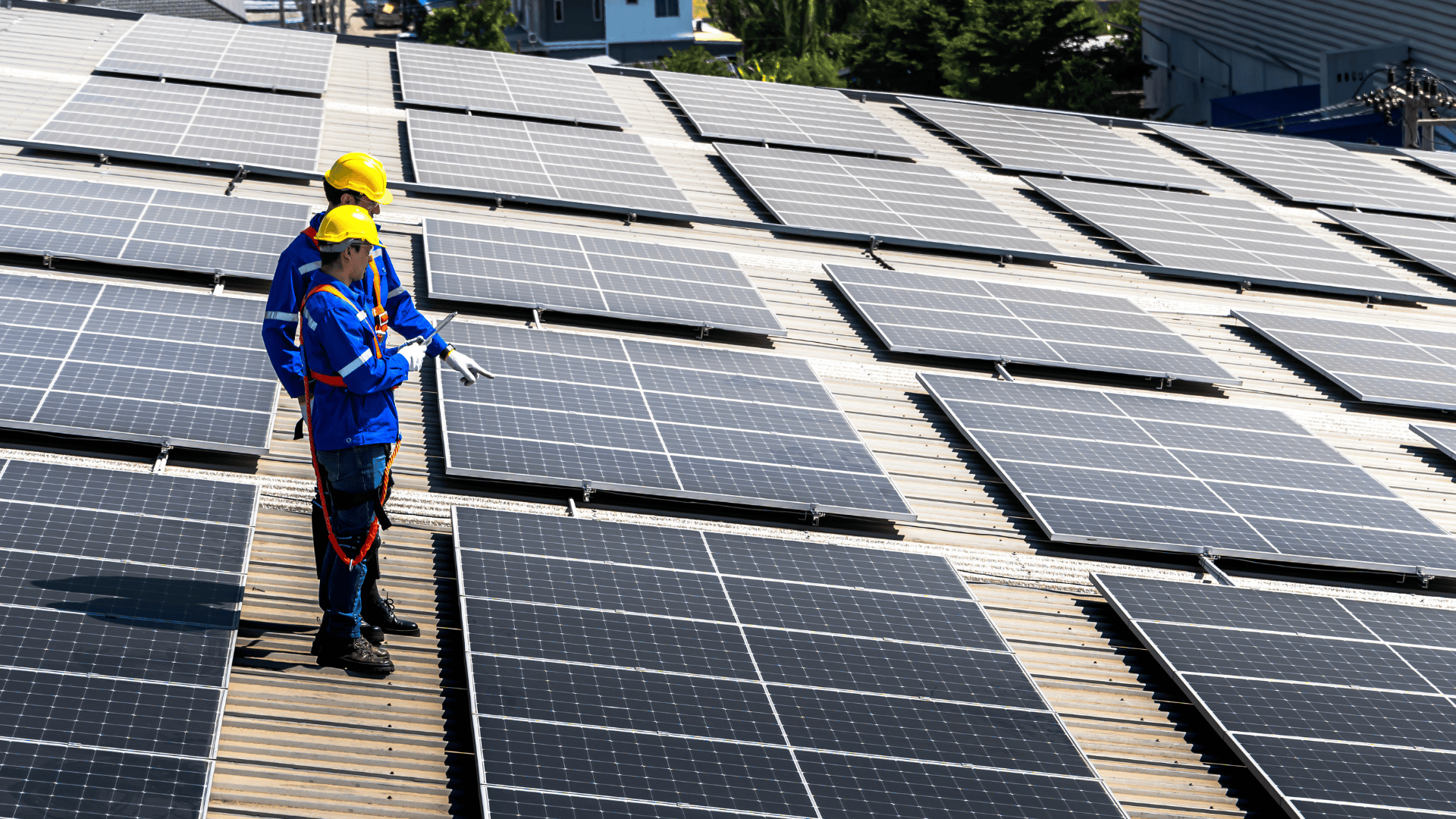October 7, 2024
Solar Design Software
Steve Jobs, the visionary behind Apple, once said, "Design is not just what it looks like and feels like. Design is how it works."
In the solar industry, this philosophy rings especially true. Design is about more than aesthetics, it’s about ensuring optimal performance. When laying out solar panels, precision is essential. A single misplaced panel can lead to wasted energy and disappointed customers.
Solar professionals encounter challenges like optimizing sunlight exposure and managing shading and roof angles. Mistakes in these areas can be costly, affecting both time and money. In such a competitive market, there’s no room for errors.
That’s where Solar Design Software steps in. It automates complex calculations, helping you create efficient, accurate layouts quickly. But with many choices available, which one is right for you? Let’s see the best options to get your solar designs just right!
Check out our latest blog to learn more about Solar design Software:
Sales Teams Leveraging Solar Design Software to Improve Client Proposals and Close Deals Faster.
Key Takeaways
1. Why Accurate Solar Panel Layouts Matter: Optimize energy, reduce costs, customer satisfaction, minimize maintenance, etc.
2. Key Features of Solar Design Software: 3D modeling, shading analysis, energy forecasting, performance estimates, custom layouts, compliance, and integration.
3. Criteria for Choosing Solar Design Software: User-friendly, scalable, integrates well, cost-effective.
4. Best Solar Design Software: Sunbase, Aurora, HelioScope, OpenSolar.
5. Sunbase Solar Design Software delivers accurate and efficient solar layouts with features like 3D modeling, shading analysis, energy forecasting, etc.
Why Accurate Solar Panel Layouts Matter?

1. Energy Optimization
Are your solar panels perfectly positioned to capture every ray of sunshine? Accurate layouts maximize energy output, ensuring your customers get the most from their solar systems and enhancing your solar business.
2. Cost-Efficiency
As you manage your budget, you might wonder, “How can I avoid unnecessary expenses?” Well, precise designs reduce waste and errors, helping solar companies keep costs low and profits high, especially in their solar projects.
3. Customer Satisfaction
Consider your clients for a moment: What do they truly expect from their solar systems? Providing reliable energy projections builds trust, leading to happy customers who are likely to recommend your solar services and boost your solar business.
4. Reduced Maintenance Needs
Want to minimize future issues with your solar systems? Thoughtful layouts can help prevent shading and other problems, resulting in lower maintenance costs for solar installers.
5. Regulatory Compliance
Navigating local regulations can be tricky. How do you ensure compliance without headaches? Well-designed layouts help your solar projects meet necessary codes, protecting your solar company from penalties.
6. Informed Decision Making
In today’s competitive landscape, are you making choices backed by solid data? Accurate layouts provide valuable insights that empower solar installers to make strategic decisions, keeping your solar business ahead of the curve.
7. Scalability
Every solar company dreams of growth. Is your business prepared to expand? Accurate layouts simplify the process of taking on new commercial solar projects without sacrificing quality.
8. Competitive Advantage
In a saturated market, standing out is essential. You might wonder, "What differentiates my solar business from the rest?" Companies known for precision in solar design tend to attract more clients and establish a strong foothold.
9. Long-Term Reliability
When clients invest in solar systems, they want to know: Will these designs stand the test of time? Accurate layouts contribute to ongoing efficiency, delivering long-term returns on investment for your solar projects.
10. Integration with Technology
As solar software continues to evolve, consider this: Are you using the latest tech effectively? Well-designed layouts enhance the integration of new technologies, optimizing your project execution.
Broaden your knowledge with this engaging read: Maximize Your Sun Power: A Guide to Optimizing Solar Panel Placement for Peak Performance.
Key Features of Solar Design Software for Accurate Solar Panel Layouts

1. 3D Modeling Tools
These tools visualize solar panel arrangements, helping the sales team identify optimal placements to maximize energy production, resulting in accurate and efficient layouts.
2. Shading Analysis
Detects potential shading from trees or buildings, ensuring panels are placed in areas with maximum sunlight exposure, which prevents energy losses and contributes to an efficient layout.
3. Energy Production Forecasting
Predicts the system’s energy output based on panel orientation and location. This allows the sales team to adjust the layout to meet client energy needs accurately and efficiently.
4. Performance Estimation
Evaluates local climate conditions and panel angles, ensuring the layout is optimized for maximum energy production, thus enhancing overall efficiency.
5. Customizable Layout Options
Allows the sales team to create tailored solar panel arrangements for different roof types. This flexibility ensures maximum sunlight capture, resulting in accurate and efficient solar panel layouts and exceptional PV designs.
6. Regulatory Compliance Integration
Automating local regulation checks ensures that solar panel layouts are created with compliance in mind, enhancing their accuracy.
This leads to efficient designs that can be executed promptly without legal setbacks.
Go through: How Solar Design Software Helps Solar Companies to Streamline PV Designs?
What are the Criteria for choosing the Right Solar Design Software?

1. User-Friendly Interface
Ensure it's easy to navigate and learn.
2. Scalability
It should adapt to various project sizes, from residential to commercial.
3. Integration with Other Tools
Check for compatibility with CRM, project management software, and other tools.
4. Cost-Effectiveness
Find software that offers good features without breaking the bank.
Read Comprehensive Guide to Solar PV Design Software.
Best Solar Design Software in 2024

1. Sunbase Solar Design Software
Sunbase Solar Design Software simplifies the process of designing solar systems. It empowers solar professionals to create stunning, accurate, and precise photovoltaic layouts quickly that resonate with clients.
Features:
- 3D Modeling:
Create clear 3D views to generate exceptional PV designs.
- Shading Analysis: Identify shadows to maximize sunlight.
- Energy Production Forecasting: Predict energy generation, enhancing your solar proposals with savings insights.
- Performance Estimation:
Assess system performance in different conditions.
- Regulation Compliance:
Ensure designs meet local building codes.
- Customizable Layout:
Tailor designs to customer preferences.
- Integration with CAD: Easily save solar designs for proposals and export to CAD for professional drawings that enhance client understanding.
Benefits:
- Automates tasks, saving time and reducing errors.
- Provides tools for precise energy calculations and design optimizations.
- Speeds up project turnaround, leading to happier customers.
Drawbacks:
New users may take time to learn how to use all the features.
Integration:
Seamlessly integrates with project management, solar proposal, and CRM.
Scalability:
Works well for small and large businesses, allowing easy growth.
Affordability:
Offers a good mix of cost and functionality for various business sizes.
User Friendly:
Easy to use, making navigation simple and improving user experience.
2. Aurora Solar Design Software
Aurora Solar Design Software makes designing solar systems so easy. It empowers users to create accurate and efficient solar panel layouts while enhancing sales proposals, streamlining the entire solar sales process. It's a go-to tool for solar professionals looking to impress clients with stunning designs.
Features:
- AI-assisted 3D modeling:
Use computer vision to create 3D models of a site, capturing obstructions like skylights and vents.
- Shading Analysis: Incorporates accurate shade data using LIDAR technology.
- System design:
The AutoDesigner tool automatically places solar panels and components on roofs based on user settings, ensuring efficient layouts.
- Performance Simulation: Accurately predicts solar panel performance using verified data, factoring in shading and temperature.
Benefits:
- Smart roof and autodetection of obstructions and trees.
- Sun path simulators and irradiance maps clarify design choices.
- Use satellite imagery to assess a site without visiting it.
Drawbacks:
- No free trial option.
- Subscription costs may hurt cash flow for smaller companies.
Integration:
Works well with Google Street View and utility data for better management.
Scalability:
Supports small to large projects, allowing growth without platform changes.
Affordability:
It can be tough for smaller installers with a very tight budget.
User-Friendly:
Easy to use, with a simple 3D design for quick edits.
3. HelioScope
HelioScope, created by Folsom Labs, is a powerful solar design tool that speeds up the design and engineering of solar power systems. It claims to make the solar design process 5 to 10 times faster, making it suitable for both beginners and experts.
Features:
- Solar Panels Layout:
Design custom solar panel setups to maximize efficiency and aesthetics.
- Shading Analysis:
Check for shading issues from nearby objects to ensure panels get maximum sunlight.
- CAD Tools: Export designs to CAD for precise drawings, making collaboration with other professionals easier.
- Solar Energy Estimates:
Simulate energy production to evaluate project feasibility and savings.
- 3D Design: Visualize solar installations in 3D to better understand how they fit in the space and to present to clients.
- 45,000 Component Library: Offers a selection of solar equipment, making it easy to choose compatible parts for efficient panel layouts.
Benefits:
- Generates Fast Solar Designs.
- Offer new users a free trial.
- Estimates are accurate.
Drawbacks:
- Learning curve: Some say that HelioScope has a steep learning curve.
- Lacks features for utility-scale projects:
Integration:
It seamlessly integrates with tools like Nearmap for enhanced imagery.
Scalability:
Grows with your business, offering unlimited designs and user-based pricing for teams of all sizes.
Affordability:
Affordable for solar installers and companies focused on medium to large-scale projects.
User-Friendly:
The intuitive drag-and-drop design makes it easy to create with minimal training.
4. OpenSolar
OpenSolar is free software for designing solar energy systems. It allows users to create solar proposals and layouts while offering features for performance analysis and design optimization. It is accessible to everyone, from industry professionals to renewable energy enthusiasts.
Features:
- Built-in CRM:
A fully featured CRM enhances designs and proposals by effectively managing customer interactions and preferences.
- Customizable Proposals:
Create tailored, interactive proposals online or as PDFs, enhancing client engagement and clarity.
- Premium Imagery & 3D Modeling:
Utilize high-resolution aerial images and 3D models for detailed visualizations, improving design accuracy.
- Multi-Device Support: Design and modify solar layouts on any device, enabling real-time adjustments that improve accuracy during client interactions.
Benefits:
- No licensing fees, allowing unlimited projects.
- Offers a 24-hour online support center with resources and best practices to assist both new and experienced solar workers.
Drawbacks:
Requires a stable internet connection for functionality.
Integration:
Integrates with systems via APIs for seamless data synchronization, connecting tools like CRMs and financial platforms to enhance efficiency.
Scalability:
Suitable for small installers and large enterprises.
Affordability:
Free of cost.
User-Friendly:
Designed to simplify solar PV system design for users of all skill levels.
Take a closer look at this insightful piece: Solar Design Software Showdown: Comparing the Top Players in the Market.
Conclusion
I catch the sun but need the right angle,
Without a good layout, my light will dangle.
What am I in your solar system, bright and smart?
The answer: An accurate and efficient solar panel, playing its part!
But how do you ensure your panels are perfectly positioned for maximum energy production? The answer: The Right Solar Design Software.
With top-tier solutions like Sunbase, HelioScope, OpenSolar, and Aurora Solar, you can design layouts that optimize panel placement using advanced 3D modeling and shading analysis, etc. These tools enable the creation of accurate and efficient solar panel layouts, maximizing energy production.
The result? A solar system that operates at peak performance, transforming sunlight into significant savings.
So, pick the software that fits your needs best, and watch your solar projects outshine the rest!
About Sunbase
With Sunbase Solar Design Software create stunning and precise layouts that not only meet your client's needs but also streamline your workflow. Start designing smarter today!
Frequently Asked Questions
Q1. Is the layout of solar panels really that important for energy efficiency?
Ans. Yes, the layout is very important. A well-designed arrangement maximizes sunlight exposure, which directly affects energy output. Proper placement ensures minimal energy loss, leading to better performance of the solar system.
Q2. Could the way solar panels are arranged really influence how much one saves on their electric bill through maximized energy production?
Ans. Absolutely! A smart layout of solar panels boosts energy production, which can lower electric bills. By optimizing sunlight exposure and reducing shading, the system runs more efficiently.
I agree to receive marketing messaging from Sunbase at the phone number provided above. I understand data rates will apply, and can reply STOP to OPT OUT.







